The Ripper’s Lorry Murders 7: Leicester & Nottingham
by TIM HICKS & CHRIS CLARK
~~~
Until now, the conventional wisdom was that all of Sutcliffe’s attacks were launched from his car. Chris however was convinced that this was not so and conducted his research on the basis that Sutcliffe used his lorry on some of the murders.
The authors have collated all the cases Chris has identified as committed from Sutcliffe’s lorry, not his car. They are shown as V5 in Column F “Vehicle Used” in Table 13, here, showing the Victims list and vehicles used.
They lorry murder cases are covered in nine parts. They are not in chronological order for editorial reasons of space management and to group some cases by force area in each article.
- The Ripper’s lorry murders Part 1. Bedgebury Forest Woman.
- The Ripper’s lorry murders Part 2. Ilkley: Ilkley: Proof positive
- The Ripper’s lorry murders Part 3. More ligature killings.
- The Ripper’s lorry murders Part 4. Doncaster and Sheffield
- The Ripper’s lorry murders Part 5. Bristol, Sussex and Essex.
- The Ripper’s lorry murders Part 6. “Hope”: More witnesses.
- The Ripper’s lorry murders Part 7. Leicester and Nottingham.
- The Ripper’s lorry murders Part 8. Hammersmith.
- The Ripper’s lorry murders Part 9. London
Chris concluded that the murders of Lucy Tinslop, Rosina Hilliard (pictured above in the lead illustration) and Caroline Allen, were committed by Peter Sutcliffe. He is also satisfied that the Checketts Road attempted murder narrated by witness 3 below was also a Ripper attack. The murders were probably not committed from a lorry, but are covered in this article because of the new witness evidence pertinent to Leicester that has emerged from the lorry murder articles and because the attempted murder at Checketts Road did involve a lorry.
Chris starts Media Campaign
In October 2013, Chris contacted the ‘Leicester Mercury’ with details of the 1974 Rosina Hilliard and Carolyn Allen murders covered later in the article. As a result, the newspaper published a two page report on its front page.


Following this publication Chris made contact with Rosina’s relatives and also with some retired police officers who knew of the case.
As a result of Chris’s work and increased media attention in the Leicester Mercury and NYE, Chris was also contacted by new witnesses who recognised Sutcliffe from photographs published immediately after his arrest. This has increased his knowledge of Sutcliffe’s activity in Leicester and his modus operandi. Chris now believes that Sutcliffe:
- Enticed hitch hikers into the cab on the pretext of giving them a lift. Then either murdered them in the cab using a ligature, or enticed them out of the cab at a remote place possibly to go to the toilet and murdered them by the side of the road.
- Enticed children into the cab on the pretext of giving them a lift. To either murder them in the cab using a ligature, or entice them out of the cab at a remote place possibly to go to the toilet and murdering them by the roadside. (See article here).
- Engaged children in conversation and then bundled them into the cab, with the intention of restraining them and then either murdering them in the cab using a ligature, or at the roadside. (See the Checketts Road abduction below).
Chris has also identified an attempted murder in Leicester by Sutcliffe, which was previously unknown to the media and the police.
The new evidence is as follows:
Witness 1’s evidence
Witness 1 was a 72-year-old man who told Chris that during 1974 he was seeing a woman who was married to someone else, whom he subsequently married. On the date of Rosina’s murder at around 2:05 am they were walking along Humberstone Road (next to the deposition site on Spinney Hill Road) when he heard strange noises of a high revving vehicle engine coming from the building site near where the former Charnwood Heath Centre was being built at Spinney Hill. On looking over the compound he saw a saloon car in the dark going backwards and forwards trying to free itself from where it had become bogged down in the mud on the site.
Neither Witness 1 nor his partner wanted to identify themselves to the police at the time for fear that their private lives would become public knowledge.
The scene was very similar to the attempted murder of Marilyn Moore during December 1977. Here is an extract from Sutcliffe’s Confession Statement concerning that attack:
“She cried out and I hit her again on the head. She was still screaming. After a second blow she fell down. I saw some people walking along about 40 yards away on the narrow road at the top. I jumped in my car and started it up. I put my foot down but the back wheels started spinning and I couldn’t drive off at first. When the car got a grip I slewed round to the right and I drove away with a lot of wheel spin.”
Witness 2’s evidence
The witness narrates her story in her own words:
Hi enclosed is my email, after our telephone conversation. In 1978 I returned to work as a cashier, at the trocadero petrol station Uppingham Road, just round the corner from Humberstone Drive, it was dark round about 8pm, a man came up to the kiosk to pay for his petrol, as he walked 2/3 feet to walk away he turned and stared at me, I am sure it was the Yorkshire Ripper, he walked 2/3 more feet and turned an stared again before getting into his vehicle, which I’m sure was a car. As we worked until 9.30pm,the company payed for us to be picked up from the kiosk and driven home, it was definitely dark nights, so was either before summer, or winter that year, hope this is helpful.
Witness 2 saw Sutcliffe in 1978 at a filling station on Uppingham Road, which is the A47; the route west to the pick-up point for Rosina Hilliard at the junction of Melbourne Road and Berners Street, which leads to the M1. Was Sutcliffe filling up further East at the service station ready for the journey home via the M1, prior to picking up a prostitute that night?
Witness 3’s (Child C) evidence. The Checkett’s Road attempted murder
This attack was attempted using Sutcliffe’s lorry. The witness’s story is below in her own words:
I happened to be watching a documentary this evening on the Yorkshire Ripper. For what it’s worth it wanted to let you know that I believe I had an encounter with Peter Sutcliffe in what I believe would have been 1980 on a road called Checketts road in Leicester. I vividly remember that day because he scared me to no end. His truck was parked on the opposite side to me and he crossed over to my side of the rd. I was on my way home from school and I remember the time to be around 3.40 pm as he asked me what time it was. He then asked me if I was free which scared me so I said ‘no’ and started walking faster. I looked behind and he was following me. I started running and he also started running right up to my street. Luckily he didn’t see me go into the house.
I peeked through the window and saw him walk all the way to the end of my street and back. I was terrified. I recognised him from the pic in the papers following his arrest a year later. I did not report this as I did not want to be associated with him. I’m not sure whether this disclosure matters at all but I had to let my story and him out of my system.
After watching the documentary last night, I Googled to check whether it was ever proven that he went past Leicester during his killing spree. Surprisingly I came across the Leicester Mercury article which I have just realised was from 2013. It had your email address and mobile number. I realised that your investigation or interest was linked to murders committed much earlier in Leicester but it seemed like a good idea to mention my encounter and lucky escape.
I had thought of reporting my encounter to the police numerous times but would not have known how best to go about it. He had parked the truck by the school on the opposite side of the road. He walked across the road clad in a denim shirt and trousers, very short and skinny. I remember not being scared at this point. I believe I had walked passed Bernard’s Rd but before Victoria Rd. My route that I took every day and on that day was Checketts Rd up to Loughborough Rd and crossing at the traffic lights and walking towards home. I was lucky that when I approached the traffic lights, the road was clear but when he approached it, there was traffic giving me time to get to my house in the middle of the street before he reached the corner. I would have been 15 the time but always looked a couple of years older and yes I was in my school uniform although it could have been mistaken for normal clothing; yellow shirt, blue skirt and cardigan. I know it was a warm day with blue skies. I don’t remember wearing a jacket just the shirt, Cardigan and skirt. I also remember that it was the beginning of holidays and we were let out early from school. So that would probably be the Eastern break or half term break after Easter. I don’t think it would have been any term breaks after that as the temperatures would have been much higher. Also on the account that it was really quiet on Checketts Rd makes me think it was not a Friday as perhaps I would have expected more people around.
I don’t remember that there was a café on Checketts Rd but there was a pub, now called the Flamingo, a restaurant, at the corner of Cheketts Rd and Loughborough Rd which he could have frequented. Also what is now The Jungle Club, and Indian restaurant used to be a Conservative’s Club. I do remember that on that day, Cheketts Rd was eerily quiet, there was absolutely no other person on that Rd although there were cars driving past. I hope this information helps.
The authors have no doubt this was a Ripper attack and that Child C is lucky to be alive for the following reasons:
- Witness 3 saw Sutcliffe in a lorry at about 15.40 on a weekday. In 1980 Sutcliffe was driving a lorry making deliveries all over England and may have had a reason to be in Leicester on his way to or from a delivery.
- The authors believe that by 1980 Sutcliffe was hunting further afield than West Yorkshire and Greater Manchester, because by 1977/1978 he knew that the police surveillance in the West Yorkshire red light districts made it more risky for him to operate there. Hence his foray into South Yorkshire in 1981, when he was arrested and why he was looking for victims in Leicester.
- The attempted abduction point for child C at Checketts Road is about 15 minutes driving time from the M1, Sutcliffe’s direct route home to Bradford.
- The authors believe he targeted children because they were less likely to be able to resist him, than a fully grown woman, naïve and therefore easier to befriend and entice into the cab of his lorry.
- School girls fitted with Sutcliffe’s victim preferences. Child A was abducted by Sutcliffe in his lorry in 1977 or 1978 in London. Her story is told in this article and is referred to here, because it supports the evidence of Witness 3 above that Sutcliffe abducted children in his lorry. Child A has confirmed that both she and Child B were clearly under sixteen. Child C was in school uniform. Tracey Browne was fourteen when she was attacked (Case 21). According to Child C, he was loitering near her school when she first saw him.
Rosina Hilliard (Case 13). Leicestershire Police
Rosina was a 24-year-old prostitute from a deprived background. She plied her trade in the Charnwood district of Leicester and was known to the police. Her body was found by a lorry driver at 07:00 on the morning of Friday the 22nd of February 1974 in a building site at Spinney Hill Road, Leicester.
Leicestershire Police mounted a major investigation which revealed the following information:
- She had been seen by members of the Leicestershire Police Vice Squad at 01.30 that day at the junction of Berners Street and Melbourne Road about half a mile from the deposition site.
- An attempt had been made to strangle her – possibly with a ligature – and her skull had been shattered from behind, possibly with a hammer.
- Evidence from prostitutes identified two vehicles of interest; a Morris Minor and a Ford Escort, which were not from regular clients.
- Tyre tracks were identified at the building site which probably came from a Ford, which may have driven over Rosina’s body.
Unfortunately the investigation was unsuccessful and did not make any connection to the Yorkshire Ripper.
Why the authors believe Peter Sutcliffe should be considered as a suspect in the murder of Rosina Hilliard
- Peter Sutcliffe worked as a furnace man at Anderton International in Bingley from April 1973 until taking redundancy in February 1975. During this time there was a “Three-day Week” from 31 December 1973 due to industrial unrest. This meant that for two days a week there was no work because rota electricity cuts were enforced and there was a shortage of coal. Sutcliffe would certainly have been on short time or been laid off from his job, which depended on coal. This would have given Sutcliffe far more time to roam and go further afield. Rosie Hilliard’s murder occurred about 2am on Friday 22 February 1974 whilst the “three-day week” was in force.
- Rosina Hilliard was a prostitute, which fitted with Sutcliffe’s victim preferences.
- The cause of death – attack with a blunt instrument possibly a hammer – was a classic indicator of a ripper attack. The attack included use of a ligature. Sutcliffe also used a ligature in some of his attacks and had one on him when he was arrested.
- The body lacked the Ripper signature of being undressed and posed, because as with the attack on Marilyn Moore (Case 40) in Leeds, Sutcliffe was disturbed by witness 1 and his lover. He therefore followed his standard modus operandi of fleeing the scene in his car.
- Sutcliffe owned a Morris Minor and a lime green Ford Capri GT at the time. The Capri could have been mistaken for an escort in bad light.
- During 1969 Peter Sutcliffe’s sister Maureen had started seeing Robin Holland from Keighley who was a Sapper in the Royal Engineers. On the 3rd of March 1973 she married him at Worth Valley Register Office and they moved to Whitehall Gardens RAF Duxford in Cambridgeshire as he was stationed at Waterbeach Barracks situated between Ely and Cambridge in Cambridgeshire. In February 1974 Maureen Holland was in the last month of pregnancy with her second child. Sutcliffe doted on Maureen and her 4 year old daughter and visited whenever he could. The A14 East Coast Route from Coventry to Huntingdon was not completed until the mid-1970’s as was the M11 south from Cambridge. So the A1 was a favoured route from Duxford to the M1 and home. Sutcliffe’s return route from visiting his sister could have been A1 from Duxford, Leicester cross-over A47 to the M1, which would take him right past the spot where Rosina was murdered, just off the A47 Humberstone Road.
- The pick-up point at the junction of Melbourne Road and Berners Street, and the deposition site at Spinney Hill Road are both just off the A47 Humberstone Road. The route from the pick-up point to the deposition site leads back to the A47, which is the main trunk road leading west to the M1. Sutcliffe’s route M1 from Bingley Leicester cross-over A47 to A1 to Duxford would take him right past the spot where Rosie Hilliard was murdered just off the A47 Humberstone Road.
- The known pattern of Sutcliffe’s offending shows that he typically favoured locations offering a clear and quick escape route to a motorway and home. Sutcliffe enjoyed driving and travelled long distances. His route home at night along the M1 would take about two hours.
Caroline Allen (Case 15). Leicestershire Police

Caroline Doreen Allen aged seventeen (pictured above) was a part time nanny who disappeared while returning home from work at Walnut Avenue, Bramcote, Nottingham at about 20.00 hours on the 10th of April 1974. She planned to catch the bus to her home fifteen miles away in Kinoulton in Nottinghamshire. She was known to hitch hike.
During the lunchtime of that day an elderly woman witness saw what was described as a Lotus sports car near the A52/A606 Roundabout at Edwalton. The driver of this vehicle was talking to a teenage schoolgirl for about five minutes before she ran across to the lady saying she was terrified. The girl stayed with the woman until a bus arrived and it is believed that her destination was between Tollerton Lane and Stanton-in-the-Wolds.
Nottinghamshire Constabulary launched a major investigation. A hitch-hiker answering Carolyn’s description was seen being picked up in a lime green Lotus Europa part registration number LTW or LTP that was originally travelling along the A606 from Leicestershire towards Nottingham and turned round when the male driver saw her hitching in the opposite direction at the A52/A606 roundabout at Edwalton Nottinghamshire, which is about halfway between Bramcote and Kinoulton. She was seen to get into the car, which then drove off southwards to the A46, (which connects Nottingham and Leicestershire) towards Leicestershire and Melton Mowbray, in the opposite direction from where it had travelled from.
There were further sightings of the lime green Lotus on the car park of the Durham Ox public house at Six Hills on the A46 which was a short distance from the murder scene. However, it emerged during early January 1976 that that a driver of a Lotus car actually picked up a male hitch-hiker. Whether there were two different Lime Green Lotus Europa’s operating on the same day in Leicestershire is not clear.
Her body was found in woodland nearly two years later on the 3rd of December 1975 at Old Dalby Wood, Little Belvoir, Leicestershire. The remains were skeletal and had been disturbed by wildlife. The pathologist was unable to identify a cause of death, but was able to confirm that she had been beaten about the back of her head. Her jeans were missing indicating a sexual motive.
Although Caroline had been abducted in Nottingham, Leicestershire Police was the lead force because the body had been found in its force area.
Murder of Lucy Tinslop (Case 5) Nottinghamshire Police
Caroline Allen was abducted in Nottinghamshire. This was probably not the first time that the Ripper had struck there.
Lucy Tinslop was attacked on her twenty first birthday at 11:30 pm in Bath Street, Nottingham. She had been strangled, disembowelled and stabbed repeatedly in her genitals. This is entirely consistent with Sutcliffe’s modus operandi and the authors believe Sutcliffe should be considered as a suspect for it. Unfortunately Nottinghamshire Police mislaid the file on her murder, so it has proven impossible to progress this case any further.
Why the authors believe Peter Sutcliffe should be considered as a suspect in the murder of Caroline Allen
- As stated above, schoolgirls fitted with Sutcliffe’s victim preferences.
- Caroline had been beaten about the head. A classic indicator of a Ripper attack.
- Caroline’s clothes had been removed, again a classic indicator of a Ripper attack.
- Caroline was hitch-hiking. The evidence of Child A and Witness 3 above confirm that Sutcliffe picked up schoolgirls that were hitch-hiking.
- In 1974, Sutcliffe owned a lime green Ford Capri with a black vinyl roof which was similar to a Lotus Europa. Drawings of the two cars placed side by side show they are very similar. If Caroline had hitched it would have been Around 8pm with sunset being at 7.50pm there was low cloud making an overcast sky that evening making visibility poor. In poor visibility the black vinyl roof would make the silhouette of a Capri look not dissimilar to a Lotus Europa.
- Sutcliffe’s sister Maureen’s second child was born at the RAF Hospital Ely on the 1st of April 1974. This is a highly significant event in the Yorkshire Ripper investigation. Shortly afterwards mother and baby returned to their home in Duxford. Sutcliffe was devoted to Maureen and there is no doubt he will have visited her in hospital and/or at home. He would travel the 196 miles from Bradford to Duxford via the M1 then crossover to the A1 and return via the same route. Caroline Allen was hitching along the A52 which connects the M1 to the A1 and Duxford via the A606 link road to Melton Mowbray via Oakham to the A1 at Stamford and then Cambridgeshire. This would be a convenient route for Sutcliffe to travel along to and from his sister’s married quarters in Duxford.
- Sutcliffe was surveillance-aware and went to great lengths to avoid Police surveillance. Was he varying his route by using the A52/A606 route to Duxford, to avoid the A47 route and the site of the murder of Rosina Hilliard from two months before, in case he came to police attention? Hence his use of the A52/A606 route.
- More significantly, Caroline was murdered during the Easter Holiday when Sutcliffe would be off work. His nephew had been born only 9 days before. Was he using the holiday to visit his sister and see his nephew for the first time? Putting him in the area of Caroline’s abduction at the A606/A52 roundabout. Was Sutcliffe returning to Bradford from visiting his sister, using the route A1, A606/A52, M1 and saw Caroline hitch hiking? Was Sutcliffe the man seen talking to the terrified hitch-hiker on the A52/A606 roundabout at Edwalton? Did he then try his luck with another hitch-hiker, pick-up Caroline Allen, drive her along the A606, then turn off for the A46 and the deposition site at Old Dalby Wood?
- The known pattern of Sutcliffe’s offending shows that he typically favoured locations offering a clear and quick escape route to a motorway and home. Sutcliffe enjoyed driving and travelled long distances. He had a good knowledge of routes and cities and an extensive collection of A-Z maps. His route home at night along the M1 would take about two hours.
The “Nude in the Nettles” murder
Caroline Allen’s case has a lot of similarities to the “Nude in the Nettles” murder (NYE coverage here, here and here), which both authors believe was committed by Sutcliffe. Both bodies were dumped close to a road, were effectively concealed in a copse and lay undiscovered for about two years. Clothing was missing in both cases. The victim who the authors have called “Hope” may also have hitch hiked a lift or been enticed into the cab of Sutcliffe’s lorry with the promise of a lift.
Leicestershire Police: Appeal for information
Leicestershire Police released the following statement to the authors:
“All unsolved major crime cases remain subject to periodic review based on emerging information and advances in forensic techniques, we are aware of the previous assertions in numerous articles and publications nationally, that Peter Sutcliffe may have been responsible for other murders across the country, including Leicestershire. Reviews of those cases have not established a link; that said any information which may be relevant to those investigations and have an impact on the potential outcome will always be assessed taking into account known facts and information about the case.”
Anyone who has any information about an unsolved case or an on-going investigation should contact the lead force in the enquiry on 101.

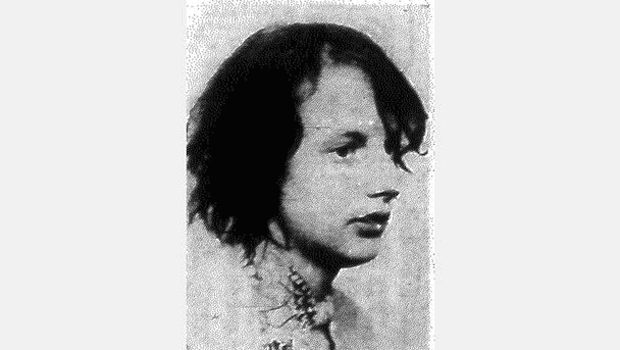

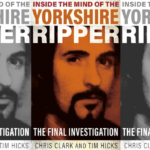

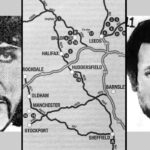
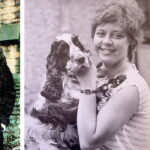

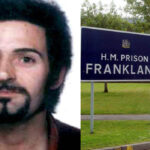


















Comments are closed.